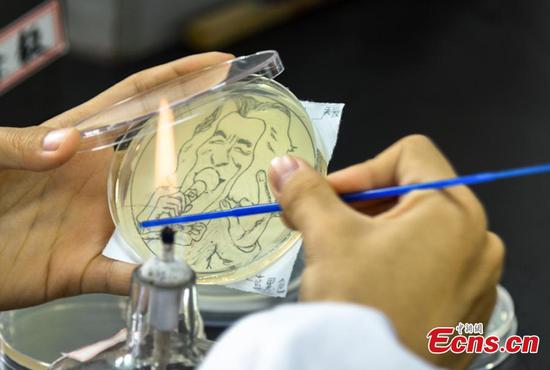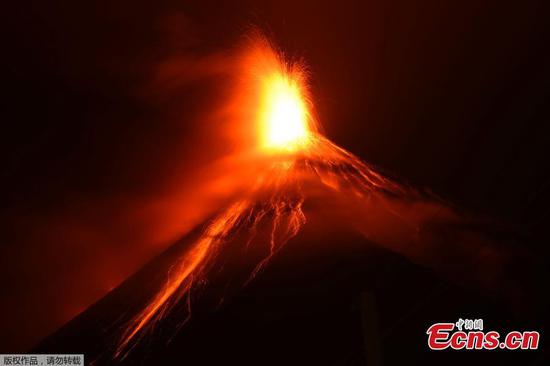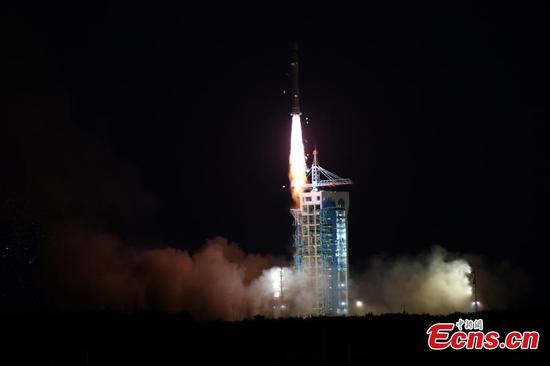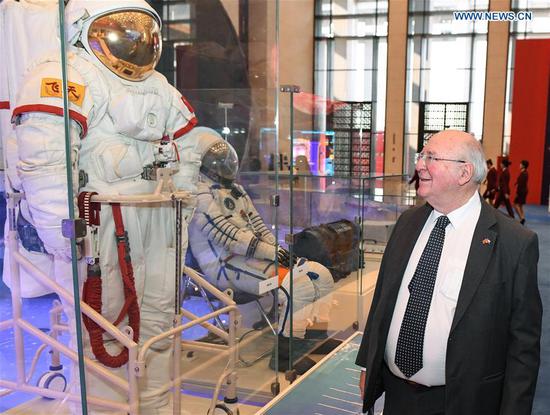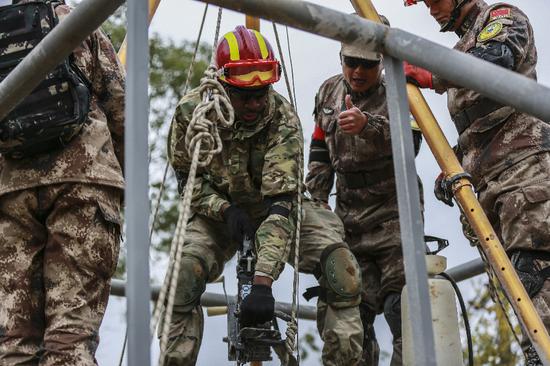
An artist's interpretation of the InSight lander operating on the Martian surface. Credit: NASA/JPL-Caltech
NASA's InSight spacecraft is scheduled to touch down on Mars next Monday, after a six-month, 300 million miles (480 million kilometers) journey.
Launched on May 5, InSight marks NASA's first Mars landing since the Curiosity rover in 2012 and the first dedicated to exploring underground.
The touchdown is scheduled at approximately 3 p.m. EST on Nov. 26, according to NASA.
"InSight is going to Mars to study the deep interior of Mars to understand how the land is formed," Bruce Banerdt, InSight principal investigator, told a press briefing on Wednesday.
"Each planet is different. Mercury has a sun-baked surface. Mars is pretty cold today. Earth is a nice place to take a vacation. We really like to know why one planet goes one way, and another planet goes another way," he said.
"Those answers are in the details of the structure that formed very early in the planet history," Banerdt added.
After touching down, NASA's InSight will spread its solar panels, unfold a robotic arm, and stay put. Unlike the space agency's rovers, InSight is a lander designed to study an entire planet from just one spot.
It will detect geophysical signals deep below the Martian surface, including marsquakes and heat. Scientists will also be able to track radio signals from the stationary spacecraft, which vary based on the wobble in Mars' rotation, according to NASA.
InSight is part of NASA's Discovery Program, managed by the agency's Marshall Space Flight Center in Huntsville, Alabama. Lockheed Martin Space in Denver built the InSight spacecraft, including its cruise stage and lander, and supports spacecraft operations for the mission.
A number of European partners, including France's Centre National d'Etudes Spatiales and the German Aerospace Center, are supporting the InSight mission. Enditem














